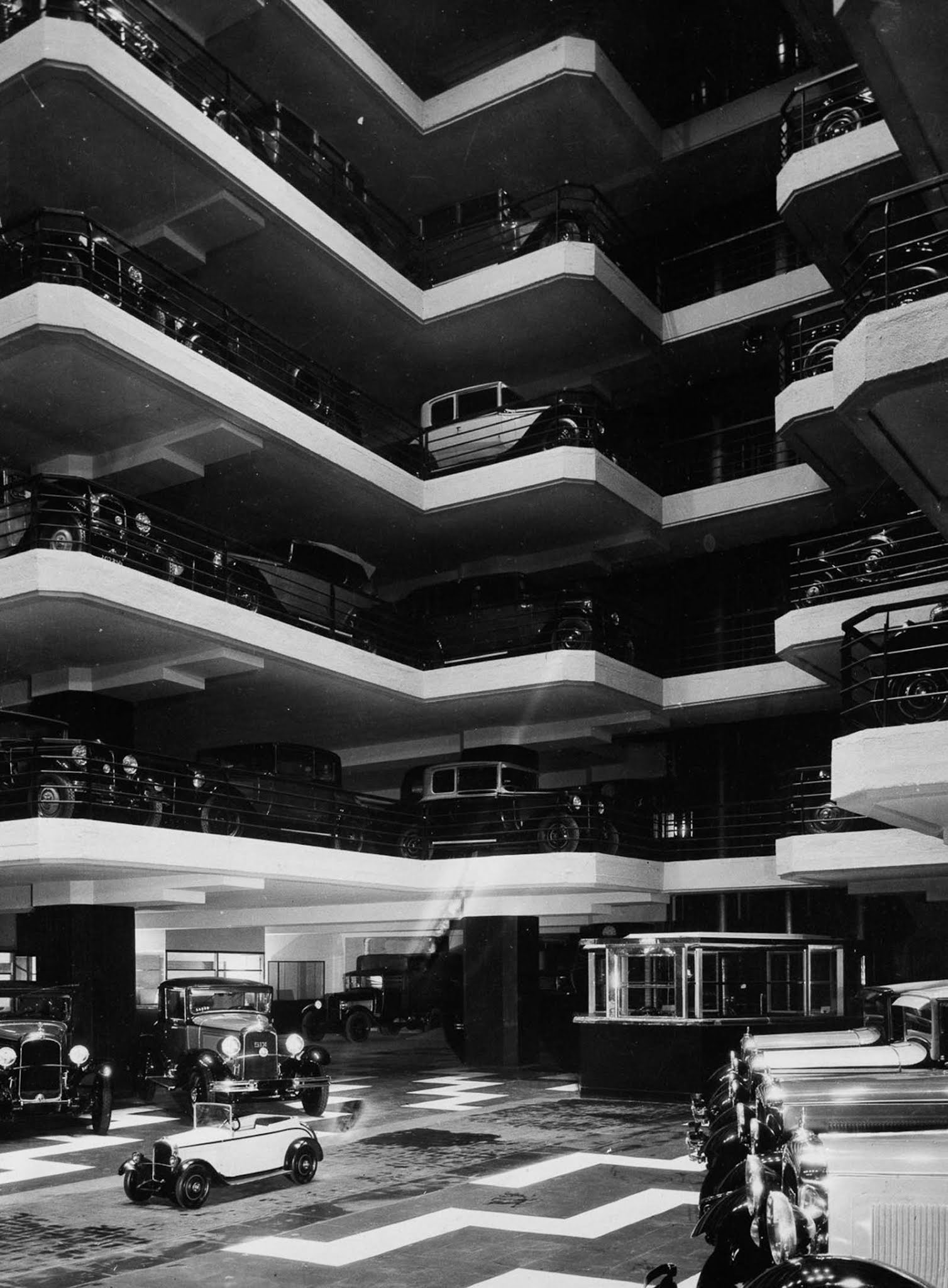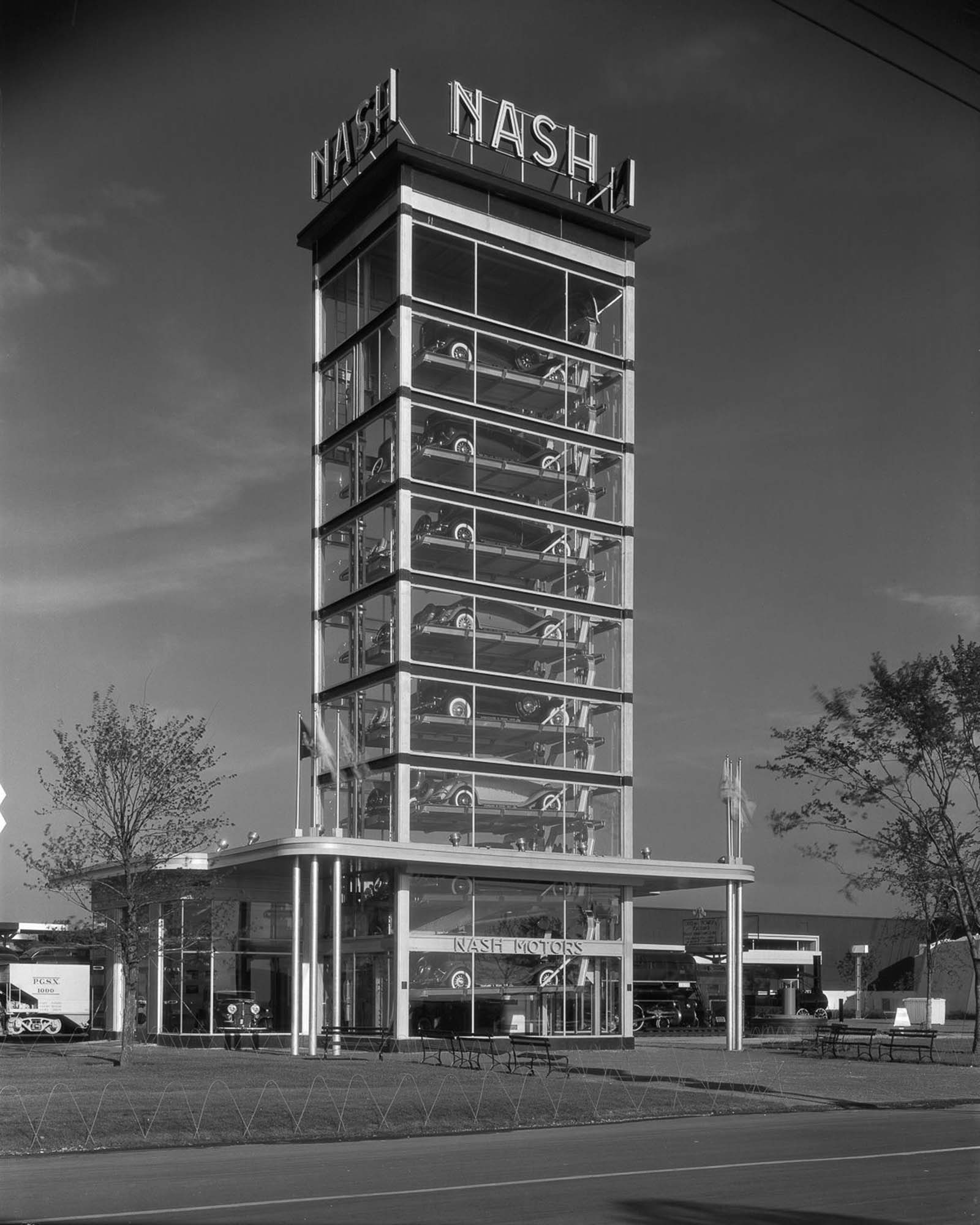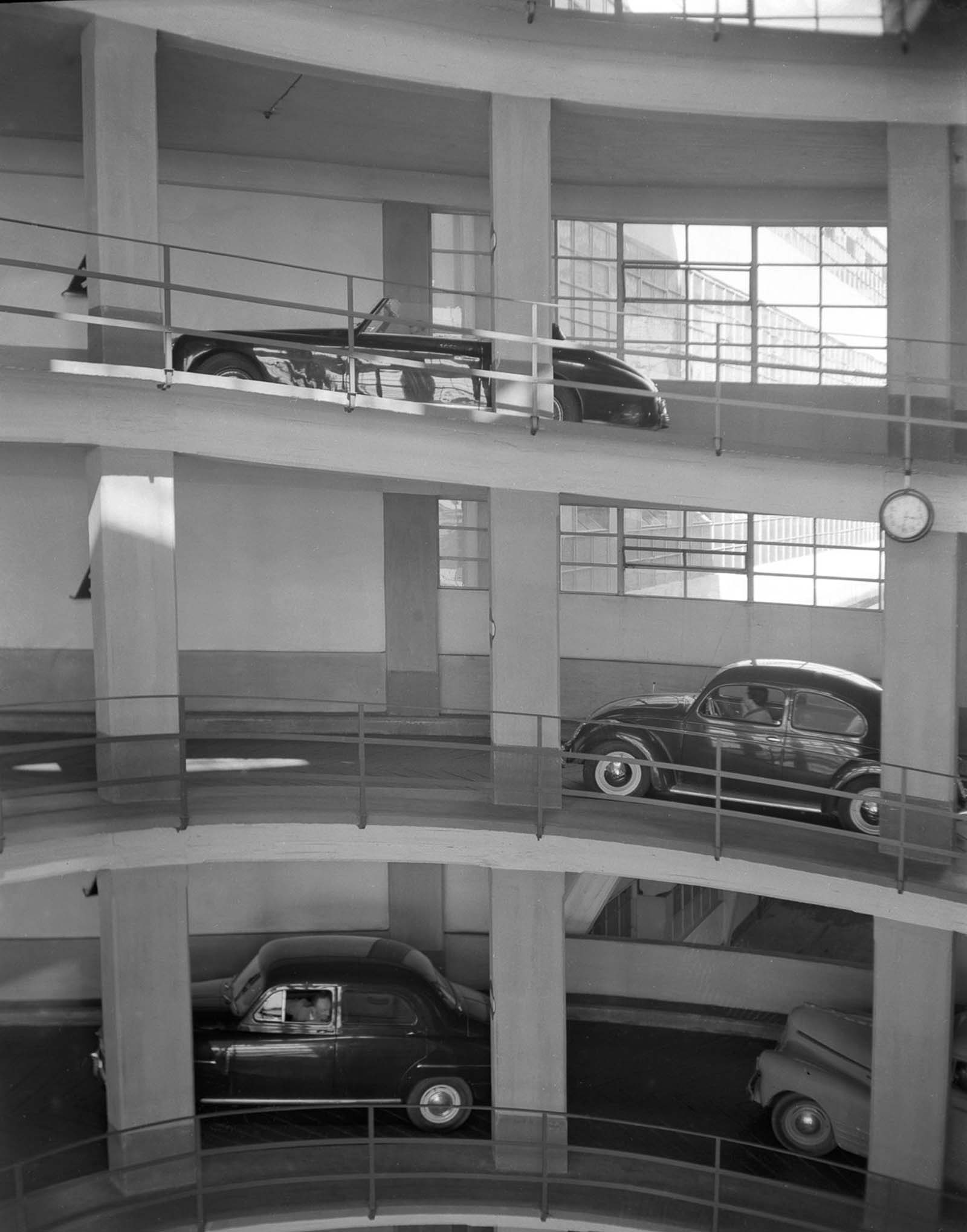Vintage photographs of early vertical parking garages, 1920-1960

The rapid growth of the automobile at the turn of the 20th century presented an immediate problem: where to park all these vehicles roaming the streets?
The concept of vertical parking garages was and is inspired by two factors: the need for parking spaces and the lack of available land.
The vertical parking solution was first used in Paris, France in 1905 at the Garage Rue de Ponthieu. The system consisted of a massive multi-storey concrete structure with an internal car lift to lift cars to the upper levels where attendants parked the cars.
In the 1920s, a Ferris wheel-like vertical system (for cars instead of people) called the Paternoster system became popular because it would allow eight in the ground space typically used to park two cars. Cars could be parked. Mechanically simple with a small footprint, the Paternoster was easy to use in many places, including inside buildings.
Rotary lift parking systems work like a Ferris wheel: cars are parked in suspended cages attached to a belt, one car at a time, rotating the entire chain of cars until the next cage is down .
Powered by an electric motor or hydraulic pump, they are actually less expensive per parking space because they use less land and require less structure around them.

The first such parking systems in America appeared in the 1920s in LA, New York, and Chicago. For the 1933 Century of Progress World's Fair, the Nash Motor Company built the first glass-enclosed parking system.
During this time, Kent Automated Garage was installing automated parking systems with a capacity of over 1,000 cars.
Washington DC. saw the first driverless parking garage in 1951 which soon closed. Automated parking systems captured interest in America in the late 1940s '50s. Some of the systems employed during that time are still in use.
These systems included Bowser, Pigeon Hole System and Roto Park. These systems often suffered mechanical problems and people had to wait an eternity to get their cars back.
The popularity of automated parking systems eventually waned due to the long wait times required for customers to retrieve their cars, but they can still be found in cities around the world, especially in Asia.








No comments: